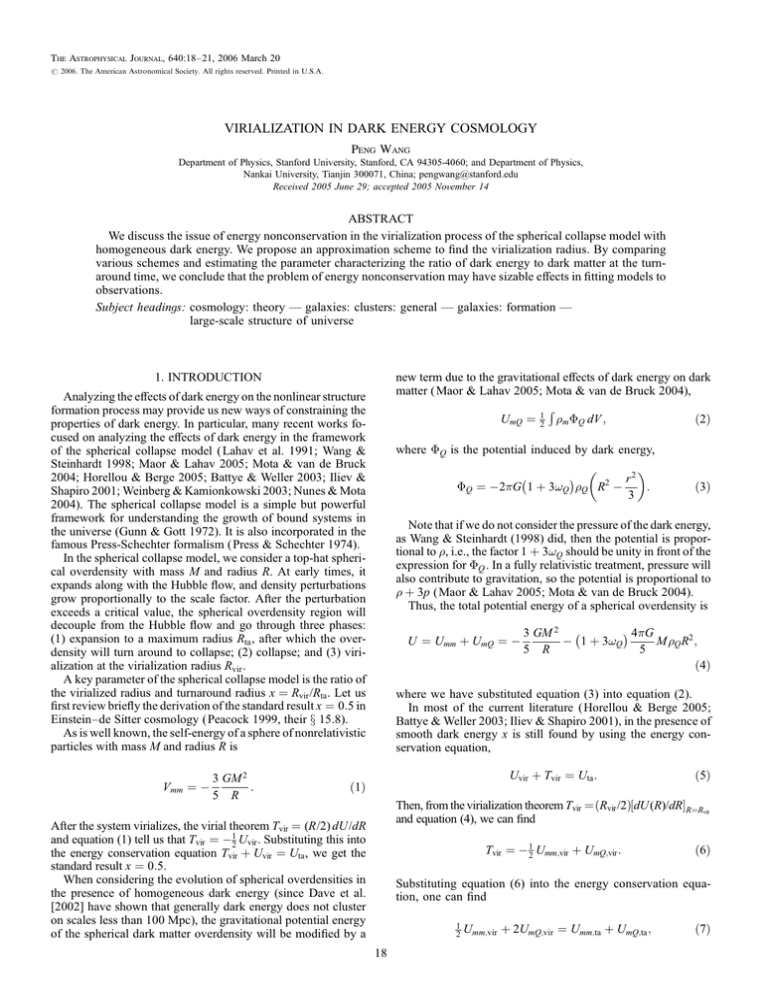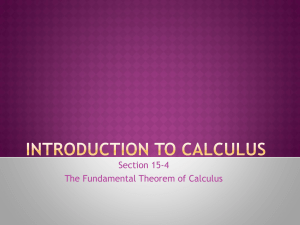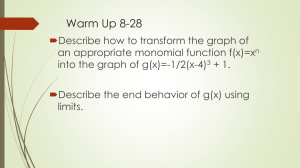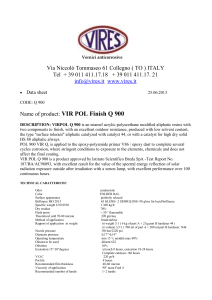
The Astrophysical Journal, 640:18–21, 2006 March 20
# 2006. The American Astronomical Society. All rights reserved. Printed in U.S.A.
VIRIALIZATION IN DARK ENERGY COSMOLOGY
Peng Wang
Department of Physics, Stanford University, Stanford, CA 94305-4060; and Department of Physics,
Nankai University, Tianjin 300071, China; pengwang@stanford.edu
Received 2005 June 29; accepted 2005 November 14
ABSTRACT
We discuss the issue of energy nonconservation in the virialization process of the spherical collapse model with
homogeneous dark energy. We propose an approximation scheme to find the virialization radius. By comparing
various schemes and estimating the parameter characterizing the ratio of dark energy to dark matter at the turnaround time, we conclude that the problem of energy nonconservation may have sizable effects in fitting models to
observations.
Subject headingg
s: cosmology: theory — galaxies: clusters: general — galaxies: formation —
large-scale structure of universe
1. INTRODUCTION
new term due to the gravitational effects of dark energy on dark
matter ( Maor & Lahav 2005; Mota & van de Bruck 2004),
Analyzing the effects of dark energy on the nonlinear structure
formation process may provide us new ways of constraining the
properties of dark energy. In particular, many recent works focused on analyzing the effects of dark energy in the framework
of the spherical collapse model ( Lahav et al. 1991; Wang &
Steinhardt 1998; Maor & Lahav 2005; Mota & van de Bruck
2004; Horellou & Berge 2005; Battye & Weller 2003; Iliev &
Shapiro 2001; Weinberg & Kamionkowski 2003; Nunes & Mota
2004). The spherical collapse model is a simple but powerful
framework for understanding the growth of bound systems in
the universe (Gunn & Gott 1972). It is also incorporated in the
famous Press-Schechter formalism (Press & Schechter 1974).
In the spherical collapse model, we consider a top-hat spherical overdensity with mass M and radius R. At early times, it
expands along with the Hubble flow, and density perturbations
grow proportionally to the scale factor. After the perturbation
exceeds a critical value, the spherical overdensity region will
decouple from the Hubble flow and go through three phases:
(1) expansion to a maximum radius Rta , after which the overdensity will turn around to collapse; (2) collapse; and (3) virialization at the virialization radius Rvir .
A key parameter of the spherical collapse model is the ratio of
the virialized radius and turnaround radius x ¼ Rvir /Rta . Let us
first review briefly the derivation of the standard result x ¼ 0:5 in
Einstein–de Sitter cosmology ( Peacock 1999, their x 15.8).
As is well known, the self-energy of a sphere of nonrelativistic
particles with mass M and radius R is
Vmm ¼ 3 GM 2
:
5 R
UmQ ¼
1
2
R
m Q dV ;
ð2Þ
where Q is the potential induced by dark energy,
r2
Q ¼ 2G 1 þ 3!Q Q R2 :
3
ð3Þ
Note that if we do not consider the pressure of the dark energy,
as Wang & Steinhardt (1998) did, then the potential is proportional to , i.e., the factor 1 þ 3!Q should be unity in front of the
expression for Q . In a fully relativistic treatment, pressure will
also contribute to gravitation, so the potential is proportional to
þ 3p (Maor & Lahav 2005; Mota & van de Bruck 2004).
Thus, the total potential energy of a spherical overdensity is
U ¼ Umm þ UmQ ¼ 4G
3 GM 2 M Q R2 ;
1 þ 3!Q
5 R
5
ð4Þ
where we have substituted equation (3) into equation (2).
In most of the current literature (Horellou & Berge 2005;
Battye & Weller 2003; Iliev & Shapiro 2001), in the presence of
smooth dark energy x is still found by using the energy conservation equation,
Uvir þ Tvir ¼ Uta :
ð1Þ
ð5Þ
Then, from the virialization theorem Tvir ¼ ðRvir /2Þ½dU (R)/dRR¼Rvir
and equation (4), we can find
After the system virializes, the virial theorem Tvir ¼ (R/2) dU/dR
and equation (1) tell us that Tvir ¼ 12 Uvir . Substituting this into
the energy conservation equation Tvir þ Uvir ¼ Uta , we get the
standard result x ¼ 0:5.
When considering the evolution of spherical overdensities in
the presence of homogeneous dark energy (since Dave et al.
[2002] have shown that generally dark energy does not cluster
on scales less than 100 Mpc), the gravitational potential energy
of the spherical dark matter overdensity will be modified by a
Tvir ¼ 12 Umm;vir þ UmQ;vir :
ð6Þ
Substituting equation (6) into the energy conservation equation, one can find
1
2
18
Umm;vir þ 2UmQ;vir ¼ Umm;ta þ UmQ;ta ;
ð7Þ
VIRIALIZATION IN DARK ENERGY COSMOLOGY
19
from which we can find the equation determining x,
4q(1 þ 3!Q )y3(1þ!Q ) x 3 þ 2½1 þ (1 þ 3!Q )qx 1 ¼ 0; ð8Þ
where we have defined q ¼ Q;ta /mc;ta and y ¼ avir /ata . If we set
the (1 þ 3!Q ) factor to unity in the first two terms of equation (8), we can get the equation found by Lahav et al. (1991) and
Wang & Steinhardt (1998).
2. THE ENERGY NONCONSERVATION PROBLEM
The procedure described in x 1 is problematic when dark
energy is dynamical, i.e., !Q 6¼ 1. Indeed, when !Q > 1, Q
is decreasing with time. When considering the collapse of a dark
matter halo of the cluster scale, since dark energy does not
cluster below 100 Mpc ( Dave et al. 2002), Q in UmQ should take
its background value, which is evolving with time. In other words,
dark energy does not virialize with dark matter; otherwise, it cannot be smooth. Thus, UmQ will contribute a nonconservative force
to the dark matter particle, so the clustering dark matter with potential (4) is a nonconservative system,
Uvir þ Tvir < Uta :
ð9Þ
Then actually, in the presence of dark energy, dark matter
cannot reach virialization in the strict sense. However, for a dark
matter halo of the cluster scale, it clusters at the era when the
effect of dark energy is still small. Thus, it is reasonable to assume that dark matter particles can reach a quasi-equilibrium
state in which the virial theorem holds instantaneously. This is
supported by observations of relaxed clusters in our universe
(see, e.g., Fabian & Allen 2003). In the following discussion, we
still call this quasi-equilibrium state virialization. Thus, assuming dark matter has reached this quasi-equilibrium state, its total
energy can be computed by the virial theorem,
R dU U ¼ Uvir þ
2 R R¼Rvir
3 GM 2
4G
a(t) 3(1þ!Q )
MR2vir Q;ta
¼
(1 þ 3!Q )
;
10 Rvir
5
ata
ð10Þ
which is decreasing with time. Although this nonconservation
effect is small in our discussion, it is worth noting that in the darkenergy-dominated era, this effect may be large. For example, in
the extreme case of phantom dark energy models, the effect of
dark energy may be so large that clusters, galaxies, and even our
solar system will devirialize in the future (Caldwell et al. 2003).
Thus, using equation (8) to find x will generally overestimate
its actual value. In fact, from the dark matter potential (4), we can
see that Utotal;vir ¼ Umm;vir /2 þ 2UmQ;vir is a monotonically increasing function of x. Thus, while in fact we have Utotal;vir <
Utotal;ta , if we still use Utotal;vir ¼ Utotal;ta to determine x, we will
get an x larger than its actual value.
If the dark energy density is time independent, then the system
with potential (4) is conservative, and thus we can use energy
conservation legitimately. Thus, to estimate the virialization
radius when dark energy density is changing with time, we can
take Q,vir to be the same as Q,ta.
With this approximation, the equation determining x is
4q 1 þ 3!Q x 3 þ 2 1 þ 1 þ 3!Q q x 1 ¼ 0:
ð11Þ
Fig. 1.—Ratio of the virialization radius to the turnaround radius x ¼
Rvir /Rta as a function of q, which characterizes the strength of dark energy at
turnaround, for !Q ¼ 0:8. The dotted line is computed by eq. (8), the solid
one is computed by eq. (11), the dashed line is computed by eq. (28) of Maor
& Lahav (2005), and the dash-dotted line is computed by eq. (16).
It is worth noting that taking Q,vir to be Q,ta does not mean
ignoring the background evolution of dark energy, i.e., making it
degenerate with a true cosmological constant. First, there is a
factor 1 þ 3!Q in equation (11), which is different from the case
of a cosmological constant. Second, the value of Q,ta is different
from Q,0, while for a true cosmological constant is constant
at all times. Thus, using equation (11) to estimate x can give us a
more realistic value than equation (8) and at the same is able to
discriminate among different values of !.
Figure 1 shows the ratio of the virialization radius to the
turnaround radius x ¼ Rvir /Rta as a function of q. From the figure, it can be seen that when q is large, i.e., the effects of dark
energy are large, equation (8) (dotted line) will always predict a
larger virialization radius than equation (11) (solid line). This
shows explicitly the comment following equation (10). Thus, by
assuming the dark energy density to be constant during the virialization process, we can use energy conservation and find a
lower x that is closer to the actual one.
It is also interesting to note that all the curves in Figure 1 are
above the standard value x ¼ 0:5 in an Einstein–de Sitter universe. This is easy to understand. Since dark energy will cause an
effective repulsive force on the dark matter, the dark matter
particles can reach equilibrium with a larger radius. Thus, x > 0:5
is a smoking gun of dark energy (see also Maor & Lahav [2005],
who reach a similar conclusion).
Recently, Maor & Lahav (2005) considered the possibility that
even if dark energy does not fully cluster, it still fully virializes.
Then, there will also be an energy nonconservation problem,
because the virialized system (now containing both dark matter
and dark energy) does not cluster at the same rate. Note that this
energy nonconservation problem is different from the energy
nonconservation problem discussed above. In the Maor & Lahav
(2005) analysis, since both dark matter and dark energy virialize,
they included the dark energy self-energy when using the virial
theorem. In our case, where dark energy is smooth and does not
virialize, the physical picture of what is going on is just a spherical
overdensity of dark matter particles collapsing in the background
of smooth dark energy. From the derivation of the virial theorem
(Marion 1970, their x 7.15), we know that the potential energy
appearing in the virial theorem is the one that will give rise to
20
WANG
forces on the virialized particles. Thus, if dark energy does not
virialize, we should consider only the potential energies giving
rise to dark matter self-gravitation and its gravitational interaction
with dark energy. This is why our energy-corrected equation (11)
is very different from that of Maor & Lahav (2005; their eq. [28]).
In Figure 1 we show the prediction of the virialization equation found by Maor & Lahav (2005; dashed line). It can seen that
for q not too large, the prediction of Maor & Lahav (2005) is
much smaller than our result, equation (11). This is conceivable.
Since in the Maor & Lahav (2005) analysis the positive selfenergy of dark energy is also included in the total potential
energy of virialized particles, Utotal will be larger than its actual
value. Since Utotal is a monotonically increasing function of x,
with the same initial energy, the equation of Maor & Lahav
(2005) will thus predict a smaller x.
Mota & van de Bruck (2004) have considered the case of
fully clustered and virialized dark energy. We think that it is interesting to consider the case in which only a portion of dark energy clusters and virializes. In this case, we should include the
dark energy self-energy that will cluster, since this part of the
self-energy will contribute to the force felt by the virialized dark
energy particles.
In this case, the dark energy evolution equation is
˙ Q þ (1 F )3
Ṙ
ȧ
(1 þ !Q )Q þ F3 (1 þ !Q )Q ¼ 0;
R
a
ð12Þ
where F characterizes the fraction of dark energy that clusters.
This equation can be integrated to find
Q ¼ Q;ta x3(1þ!)(1F ) y3(1þ!)F :
ð13Þ
First, we use our approximation method: we neglect the
background evolution of the dark energy, i.e., we take
Q ¼ Q;ta x3(1þ!) (1F ) y3(1þ!) F ! Q;ta x3(1þ!)(1F ) ;
ð14Þ
in the virialization process. Taking into account the observation
that we should only include a fraction 1 F of the dark energy
potential energy, we can get the equation determining x,
(1 F )(1 þ 3!Q ) 7 6(1 þ !Q )(1 F ) q 2 x6!Q þ6F(1þ!Q )
(2 þ 3!Q F )½4 3(1 þ !Q )(1 F )qx3!Q þ3F(1þ!Q )
þ 2½1 þ (1 þ 3!Q )q þ (1 F )q þ (1 F )(1 þ 3!Q )q 2 x 1 ¼ 0:
ð15Þ
For F ¼ 1 equation (15) will reduce to equation (11), while
for F ¼ 0 it will reduce to the equation found by Mota & van
de Bruck (2004). Thus, our result in equation (11) can be continuously connected to the case in which dark energy will also
collapse with dark matter. This is physically satisfying.
Second, if we adopt the proposal of restoring energy conservation by Maor & Lahav (2005), then when F ¼ 1 the virialization equation is
2(1 þ 3!Q )qx3!Q 2(1 þ 3!Q )qy3(1þ!Q ) x 3
þ ½1 þ (1 þ 3!Q )qx 1 ¼ 0: ð16Þ
We show the dependence of x on q from equation (16) as the
dash-dotted line in Figure 1. It can be seen that although the
approach of restoring energy conservation is different in equations (16) and (11), their predictions are rather close. This il-
Vol. 640
Fig. 2.—Dependence of q on zvir from eq. (18). The solid, dashed, and dotted
lines correspond to !Q ¼ 0:7, 0.8, and 0.9, respectively.
lustrates that although the underlying ideas are different, in
practice, our approximation scheme is quantitatively close to the
scheme of Maor & Lahav (2005). In both cases, the difference
from the old result in equation (8) is large when q is large.
From Figure 1 we can also see that for q 102 or smaller,
we get x ¼ 0:5 in all four approaches. This is reasonable. In the
virialization process, it is the self-energy of matter that plays the
dominant role. In fact, UQQ,vir /UmQ,vir and TQQ,vir /TmQ,vir are both
of the order
3(1þ!Q ) avir
Rvir 3
(1 þ 3!Q )q
:
ð17Þ
ata
Rta
Since ðavir /ata Þ3(1þ!Q ) ’ 1:63(1þ!Q ) and ðRvir /Rta Þ3 0:1, for
q < 0:01 the above ratio is much smaller than 1, and thus we
can expect that for small q the problem of energy conservation
will not influence the virialization process greatly.
Thus, to estimate the effects of dark energy on virialization, and
especially the ambiguity of energy nonconservation, it is necessary to estimate the value of q for the virialization redshift zvir that
would be interesting to observations. If for observationally interesting zvir q will always be quite small, then we can conclude
that the problem of energy nonconservation will not bother us too
much in analyzing the effects of dark energy on the formation of
nonlinear structure. Unfortunately, this is not the case.
Let us begin by writing q as
q¼
Q;ta
Q;ta
Q0 ð1 þ zta Þ3!Q
¼
¼
;
mc;ta m;ta
m0
ð18Þ
where we have defined ¼ mc;ta /m;ta .
First, after specifying zvir , zta can be computed using the fact
that tvir ¼ 2tta , which is due to the observation that collapse
proceeds symmetrically to the expansion phase. Then, we use
the fitting formula for presented by Wang & Steinhardt (1998):
2
3
0:79þ0:26
m;ta 0:06!Q
m;ta
:
ð19Þ
¼
4
With those two inputs, we can get the dependence of q on zvir
from equation (18), shown in Figure 2. It can be seen that q will
be of the order 102 when the virialization redshift is larger than
No. 1, 2006
VIRIALIZATION IN DARK ENERGY COSMOLOGY
21
computed that for !Q ¼ 0:6, vir 420 for zvir ¼ 0. Furthermore, as can be seen in Figure 3, whatever scheme we use to find
x, there is a notable difference between the case of a true cosmological constant and dynamical dark energy. Thus, cluster
observations may provide important information on the dynamical behavior of dark energy.
3. CONCLUSIONS AND DISCUSSION
Fig. 3.—Thick lines: Dependence of vir on zvir for !Q ¼ 0:6, 0.8, and
1 from top to bottom using eq. (11). Thin lines: Dependence of vir on zvir
for !Q ¼ 0:6 and 0.8 from top to bottom using eq. (8); the case of ! ¼ 1
is identical with that of using eq. (11).
roughly 2. Combining this with Figure 1, we conclude that for
observationally interesting clusters, i.e., clusters formed after
redshift 2, the presence of dark energy will produce sizable
modifications to the standard result x ¼ 0:5. Thus, observational
evidence for x > 0:5 would be strong evidence in favor of dynamical dark energy.
An important parameter in fitting theoretical calculations to
observation is the density contrast at virialization, vir mc;vir /m;vir ¼ y 3 x3 . Figure 3 shows the dependence of vir
on zvir for !Q ¼ 0:6, 0.8, and 1 from top to bottom using
equations (11) and (8). We can see that for !Q not too close to
1, there are obvious differences in the predicted vir using
equations (11) and (8). Thus, including the effect of energy
conservation may have a large impact on fitting models to
cosmological observations such as weak lensing ( Weinberg &
Kamionkowski 2003). It is worth noting that if we ignore the
1 þ 3! factor in UmQ , as in Wang & Steinhardt (1998) and
Weinberg & Kamionkowski (2003), then the difference will be
even larger. For example, Weinberg & Kamionkowski (2003)
To summarize, in this work we discussed the issue of energy
nonconservation in the virialization process of spherical overdensity with homogeneous dark energy. We proposed taking the
dark energy density to be constant during the virialization process to obtain an estimate of the virialization radius. By comparing various schemes and estimating the parameter q, we
concluded that there will be a sizable effect of dark energy on the
virialization process. A general signature of dark energy is that
the final virialization radius will be larger than half of the turnaround radius.
It should be emphasized that the analysis in this work is quite
qualitative. More detailed numerical simulations and analysis of
observational data are required to estimate quantitatively the
effect of dark energy on spherical collapse models and answer
the general question, can we constrain the evolution of dark energy by studying the structures of nonlinear objects in our universe? Furthermore, firmly establishing the result x > 0:5 from
observation is challenging. In practice, it is much easier to directly measure baryons in clusters. However, there are some astrophysical processes leading to energy nonconservation in the
virialization process of baryons in the dark matter halo (e.g.,
X-ray emission of the hot gas, conduction, active galactic nucleus heating, and dynamical friction; see, e.g., Peacock 1999,
their x 17.3, and references therein). We should compare the effects of those processes to those of dark energy in a realistic analysis. To achieve this, we need to know the concrete physical
mechanism of virialization in both the dark matter and baryon
sectors, which is now still not well understood. Thus, more work
in this direction is needed and will be rewarding.
I would like to thank Irit Maor for helpful comments on the
first version of this paper.
REFERENCES
Battye, R. A., & Weller, J. 2003, Phys. Rev. D, 68, 083506
Maor, I., & Lahav, O. 2005, J. Cosmol. Astropart. Phys., 07, 003
Caldwell, R. R., Kamionkowski, M., & Weinberg, N. N. 2003, Phys. Rev. Lett.,
Marion, J. B. 1970, Classical Dynamics of Particles and Systems (2nd ed.; New
91, 071301
York: Academic)
Dave, R., Caldwell, R. R., & Steinhardt, P. J. 2002, Phys. Rev. D, 66, 023516
Mota, D. F., & van de Bruck, C. 2004, A&A, 421, 71
Fabian, A. C., & Allen, S. W. 2003, in Texas in Tuscany, ed. R. Bandiera,
Nunes, N. J., & Mota, D. F. 2004, preprint (astro-ph /0409481)
R. Maiolino, & F. Mannucci (Singapore: World Scientific), 197
Peacock, J. A. 1999, Cosmological Physics (Cambridge: Cambridge Univ. Press)
Gunn, J. E., & Gott, J. R. I. 1972, ApJ, 176, 1
Press, W. H., & Schechter, P. 1974, ApJ, 187, 425
Horellou, C., & Berge, J. 2005, MNRAS, 360, 1393
Wang, L., & Steinhardt, P. J. 1998, ApJ, 508, 483
Iliev, I. T., & Shapiro, P. R. 2001, MNRAS, 325, 468
Weinberg, N. N., & Kamionkowski, M. 2003, MNRAS, 341, 251
Lahav, O., Lilje, P. B., Primack, J. R., & Rees, M. J. 1991, MNRAS, 251, 128




